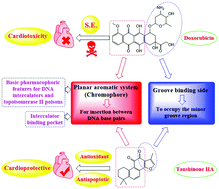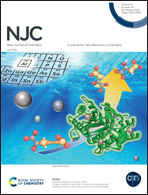Tanshinone IIA synergistically enhances the antitumor activity of doxorubicin by interfering with the PI3K/AKT/mTOR pathway and inhibition of topoisomerase II: in vitro and molecular docking studies†
Abstract
Triple-negative breast cancer (TNBC) subtype is one of the most aggressive tumors with no definite receptor, hence has a limited number of effective chemotherapeutics. Doxorubicin (Dox) is the first-line drug for the TNBC treatment, acting as a DNA intercalator and topoisomerase II (Topo II) inhibitor; however, it has been observed to exhibit strong cardiotoxicity. Tanshinone IIA (Tan IIA) has a previously confirmed antitumor activity against breast cancer in addition to its well-known cardioprotective effect. In our study, molecular docking reveals the potential activity of Tan IIA as a DNA intercalator and Topo II inhibitor as a recommended possible mechanism of action compared to Dox as a reference drug. Moreover, we wanted to assess a new use for Tan IIA in the TNBC treatment in combination with Dox to broaden its therapeutic window and compensate for its cardiotoxic effects by the cardioprotective effects of Tan IIA. On performing the in vitro MTT assay to evaluate the cytotoxic effects of Dox, Tan IIA and their combinations at different concentrations of the MDA-MB-231 cell line revealed the potential activity of Tan IIA compared to Dox, in addition to the confirmed synergistic effects of Dox/Tan IIA combinations on TNBC cell lines. Furthermore, the analysis of the gene expression profiles of PI3K, mTOR, and AKT as anti-apoptotic genes were examined in the MDA-MB-231 cell line after the treatment with the IC50 of Dox, Tan IIA, and their combination, and compared to the control using PCR. These results confirmed the synergistic effect of the Dox/Tan IIA combination that exceeded that of Dox alone.



 Please wait while we load your content...
Please wait while we load your content...